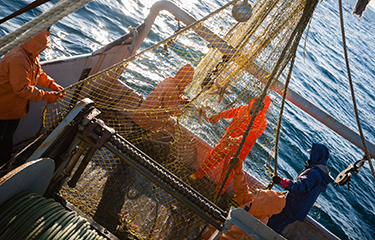Drop in yen's value activates Japan’s fishery safety net system

Fuel and fishmeal and fish oil subsidies have been activitated in Japan, following the continued weakining of the Japanese yen.
Japan has long-standing safety nets for the fishing sector, including fuel subsidies for capture fisheries and feed subsidies for aquaculture. The systems work on a matching-contribution system. In preparation for soaring fuel and compound feed prices, seafood companies and the government save funds at a one-to-one ratio.
In Japan, prices of imports have risen sharply recently due to a weakening of the yen against the U.S. dollar. The Bank of Japan announced its intention to keep interest rates low – Japan’s prime rate is currently at 1.25 percent – while the U.S. Federal Reserve Bank has engaged in a series of steep hikes that have taken its prime rate from 3.25 percent to 7 percent.
The big difference in rates led the exchange rate to rise from JPY 115 to USD 1.00 at the start of the year to JPY 148 to USD 1.00 in mid-October – a 28 percent weakening of the Japanese currency. Recent favorable U.S. inflation reports have tempered expectations of further U.S. hikes and have allowed the yen to recover a bit to JPY 139 to USD 1.00, which is still considered high by many economists.
Japan is dependent on imports for most of the fishmeal and fish oil used in its domestic aquaculture operations. Contracts for these commodities are usually fixed in U.S. dollars, so these are strongly affected by a weak yen.
Subsidy activation is based on the monthly average prices of crude oil or compound feed over the previous seven years, with the highest and lowest 12-month periods are excluded. If the average price for the most-recent quarter exceeds the average monthly price for the remaining five years, a standard compensation is paid.
The Fisheries Management Stabilization Promotion Association’s compensation judgment results for compound feed for aquaculture mean Japanese fish farmers will get a JPY 10,220 (USD 74.98, EUR 71.07) per metric ton subsidy toward feed purchases. For fuel, in the case of sudden price rises, subsidies are paid even if the price does not exceed the compensation base price from the above calculation system. Under the system's rules, Japanese fishing vessel operators will get JPY 44,280 (USD 324, EUR 307) per kiloliter in subsidies toward their fuel costs, half of which comes from their own contributions to the fund.
Fishery subsidies have often been brought up in international trade relations as providing an unfair advantage. The WTO Agreement on Fisheries Subsidies was billed as a major step forward for ocean sustainability by prohibiting harmful fisheries subsidies, which are a factor in the widespread depletion of the world’s fish stocks. For the agreement to become operational, two-thirds of members have to deposit their “instruments of acceptance” with the WTO.
It is not clear if this agreement would affect Japan’s subsidy system, as the agreement focuses on subsidies contributing to illegal fishing, subsidies for fishing overfished stocks, and subsidies to fishing activities outside of the country’s jurisdiction or waters where fishing is not governed by a relevant regional fishery management organization. It is possible that Japan would have to identify whether the fuel subsidies were used to fish any overfished domestic stocks.
Photo courtesy of DoublePHOTO studio/Shutterstock






Share